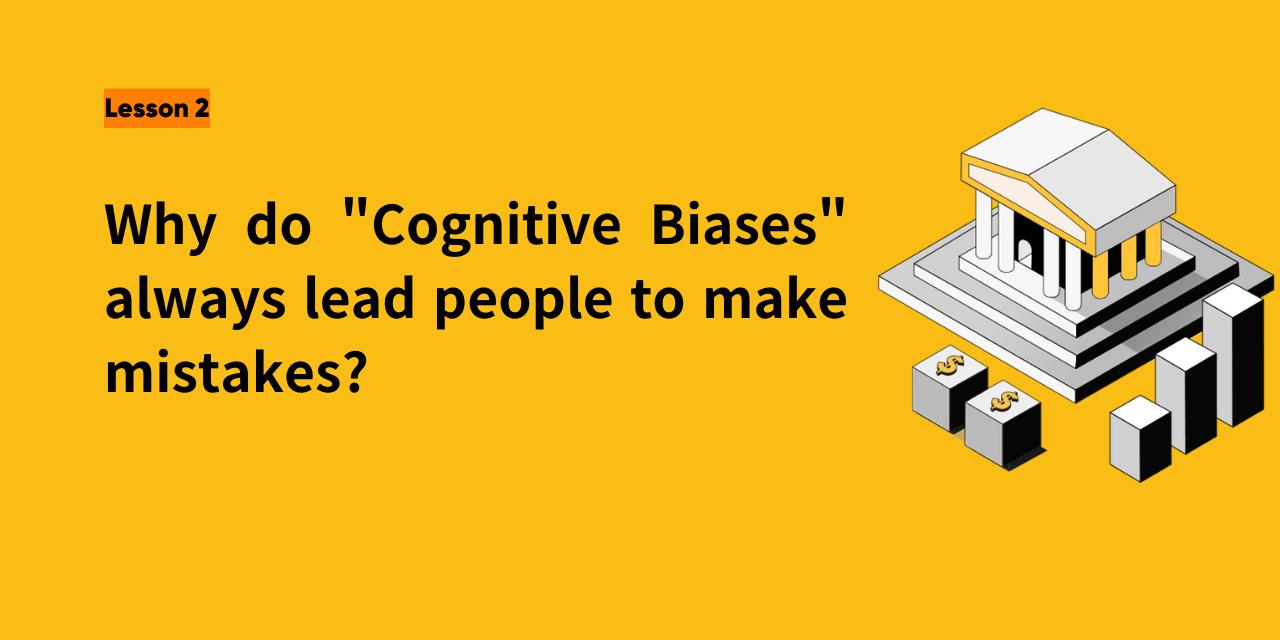Hello Tigers!
In the last class, I used three investment scenarios to help you understand what behavioral finance is. You should have noticed that behavioral finance permeates all aspects of investment, constantly influencing our investment decisions.
In this class, I will take you deeper into the classic theory of behavioral finance: "Cognitive Biases".
What are cognitive biases?
In simple terms, it implies that you're unable to perceive things accurately as you wish. If you're still unclear, I'll elaborate further with two sections below.
1.Do you really understand a company?
Let's first talk about a common cognitive bias: Do you really understand a company?
Many will first get to know a company before making investment decisions. They believe that without a thorough understanding of a company, it's impossible to make the right investment.
Do you think the same?
Yet, an unexpected finding reveals that regardless of the extent of your pre-investment research or your perceived comprehension of a company, you never truly grasp its essence. What's the reason behind this?
From a psychological perspective, there may be cognitive biases at each stage when people process information. There are mainly four stages of our understanding of things: information collection, information processing, information output, and information feedback.
For example, when preparing to invest in a listed company, we often gather relevant information about the company in advance, such as looking at its financial statements or recent news, which is the information collection stage.
After obtaining this information, we may make our own judgments based on data comparison, which is the information processing stage.
Next, based on our judgment, we decide whether to buy the stock and when to buy it, which is the information output stage.
Finally, whether the stock gains or loses, this is the information feedback stage.
To truly understand a company, we need to get all four stages of information right. However, in reality, we may make mistakes at each of these stages.
2.Cognitive biases can perpetuate repetitive mistakes
Some of you might wonder, given our understanding of these four stages, can we rectify these mistakes through ongoing learning and introspection? Is it possible to sidestep the pitfalls we've encountered?
Regrettably, that's not the reality. In the investment journey, even upon recognizing our own shortcomings, it's challenging to address them solely through learning and self-reflection.
In other words, you may continue to make the same mistakes.
This occurs because different cognitive biases may arise at various stages of information feedback. Even if you see the results, it's hard to execute commands flawlessly like a robot, leading to what we often call "knowing but not doing".
Next, I will present these cognitive biases individually --
A. Information collection stage
We are more likely to rely on information that we remember and ignore information that is not remembered, which is the availability bias. This bias makes you focus only on the information you care about and ignore other important factors.
B. Information processing stage
The most typical mistake at this stage is the representativeness bias. For instance, upon witnessing a fund manager receive the "Best Fund Manager" accolade, we promptly assume: they must be an exceptional fund manager. Nevertheless, in actuality, this manager might have merely chanced upon investing in the most volatile sector that year, and their success could be entirely coincidental.
C. Information output stage
Investors are most prone to the trap of "overconfidence". In trading, overconfidence leads people to ignore risks and make irrational trades, often resulting in heavy losses.
D. Information feedback stage
In this stage, investors may face several common cognitive biases, such as: self-attribution bias, confirmation bias, etc.
The first bias in the information feedback stage is self-attribution bias. It means that people tend to attribute good results to their own abilities and bad results to others or objective reasons.
In investment, self-attribution bias prevents people from finding the true reasons for profits and losses. When stocks are profitable, we always believe it's because of our correct judgment and strong investment logic, but this rise may be due to the general rise in the market or just short-term luck.
When losing money, we always blame the poor market environment or the poor economic performance of the period, but we may overlook biases in our own information collection and decision-making mistakes.
The second bias in the information feedback stage is confirmation bias. In simple terms: you only want to see what you want to see.
In trading, if you buy a stock, all you see is good news that supports your purchase of the stock. If you sell the stock, all you see is news that supports selling.
However, in actuality, both favorable and unfavorable news invariably coexist; it's simply a matter of deliberately selecting information that aligns with your preferences.
Now that you've learned about these cognitive biases, do you understand why you always make the same mistakes? In trading, many experts develop their own trading systems, aiming to achieve unity of knowledge and action through systematic training and regulation, to avoid repeating mistakes. I encourage you to do likewise.
Alright, this class has come to an end. In the next class, we'll discuss a new topic: What is market sentiment, and how does it affect your trades?
See you in the next class~

